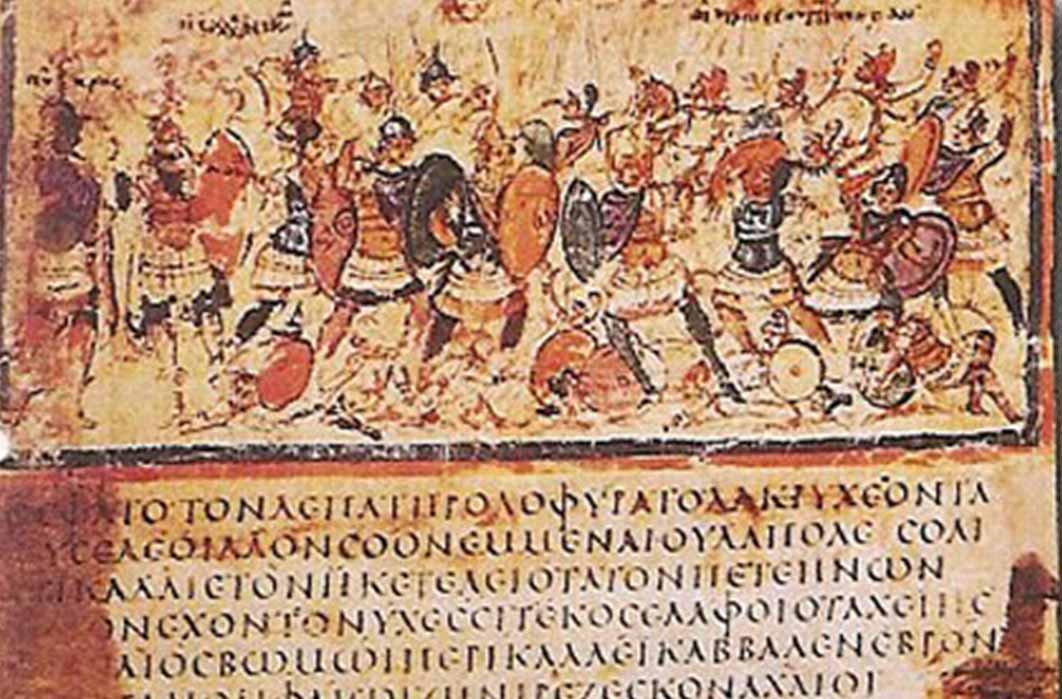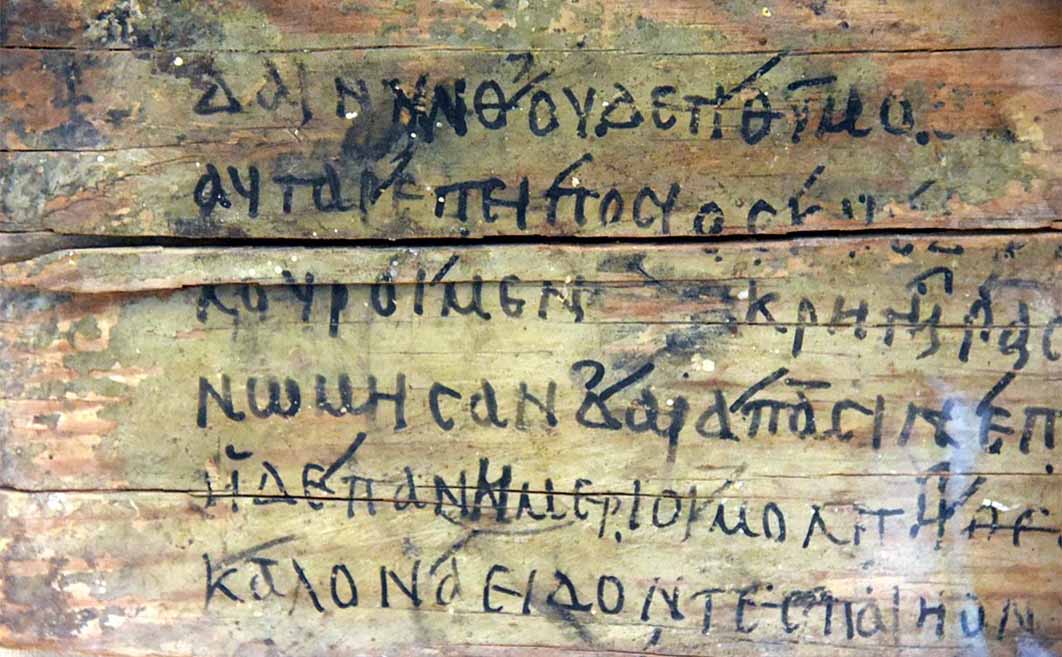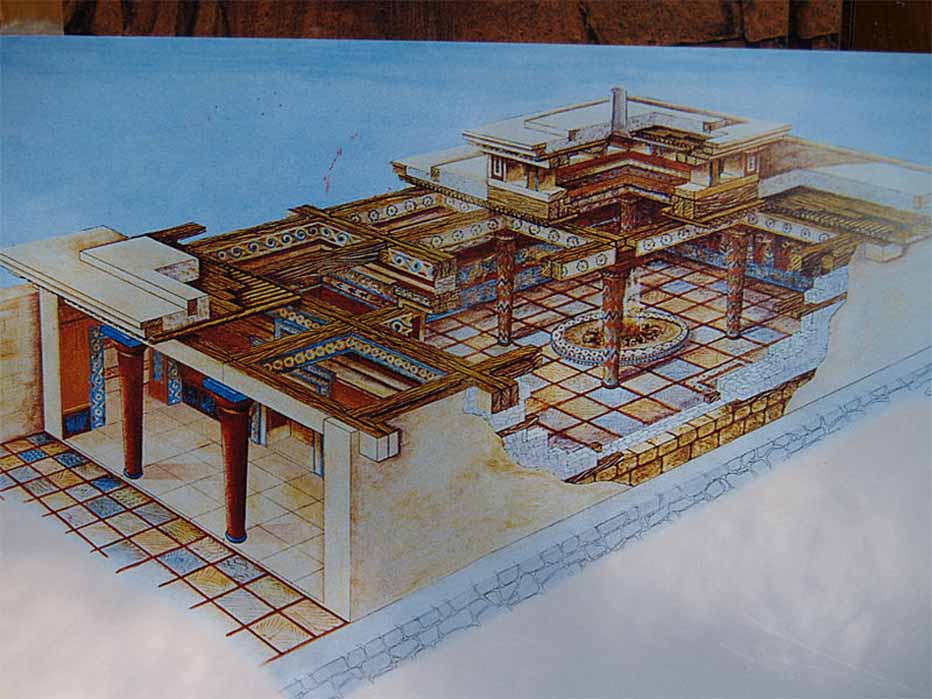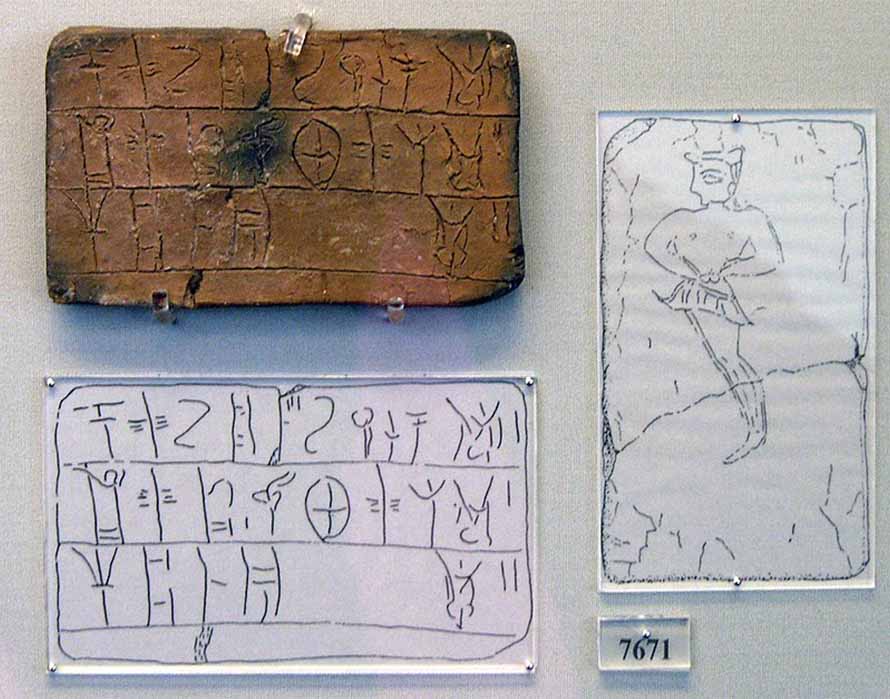
The Iliad: Overlapping Mycenaean Bronze Age And Dark Age Allegories
Known as the “Age of Heroes,” the Mycenaean civilization (1600-1100 BC) was immortalized in the Homeric epics by such noteworthy characters as the imperious commander-in-chief “king of men” Agamemnon, the “swift-footed” war hero and demi-god, Achilles, and the enchanting “queen among women,” Helen herself. The glittering gold glory of the late Bronze Age is known for its Cyclopean masonry, palatial states, reinforced bridges, fortified citadels, and giants with larger-than-life personas. Since the Mycenaeans could not speak for themselves, it has long been supposed that Homer (or the poets known as Homer) spoke for them. At last, when Homer put stylus to papyrus, he recorded for posterity a time when heroes roamed the earth side by side with the gods, and the resplendent Mycenaean civilization was still dominant.

Wooden board (writing tablet) inscribed in Greek in ink with lines 468-473, Book I of Homer's Iliad, from Egypt, (400-500 AD) British Museum (Osama Shukir Muhammed Amin/ CC BY-SA 4.0)
Nevertheless, a space of 500 years separates Homer’s time (eighth-century BC) from the last vestiges of the late Bronze Age powerhouse. Is it appropriate to assume that the Homeric epics were reflective of the Mycenaean era exclusively? After all, 500 years is no small matter. It would be as if events in a hypothetical prehistoric civilization, from 500 years ago, could be accurately reported by historians today. The preponderance of the 500-year interval is the blank slate otherwise known as the Greek Dark Age (1100-750 BC), an era that has often been easily glossed over by historians throughout the ages.
However, extensive literary analysis conducted within the last one hundred years has determined that while there are Mycenaean elements within the Homeric epics, there are elements that relate to the Greek Dark Age as well, a time which would have been more recent to the memory of those living in the Archaic Period of ancient Greece (750-480 BC). There were, after all, two prehistoric periods that preceded the composition of the Homeric epics from which the oral poets could draw. There exist some literary contradictions in the epics as they relate to the Mycenaeans, leading to the question: How dark was the Greek Dark Age?
Background to the Mycenaeans
In the quest for historical accuracy, some background on the Mycenaeans is essential. In the 17th century BC, these seafaring hyper-militant warriors conquered the Greek mainland from its earlier inhabitants. Though they borrowed culturally from the Minoan civilization, by 1400 BC they added the legendary Minoan Island of Crete and nearby islands to their long list of conquests, becoming the dominant power in the region. But their candle was brief. By the 12th century BC, the Mycenaean civilization had collapsed.

Mycenaean Palace in color, Atreid Dynasty (Ken Russell Salvador/ CC BY-SA 2.0)
All the same, besides a talent for warfare, they displayed an acumen in engineering and were quick to make their mark by building urban centers and setting up a palatial state complex within each kingdom. Moreover, they established extensive trading networks and developed a writing system; Linear B. Despite preceding ancient Greece by several hundred years, the Mycenaeans are called the “first Greeks” because they were the first to use the Indo-European Greek language. Indeed, subsequent DNA testing reveals a common genetic heritage between modern Greeks and their Mycenaean ancestors.





